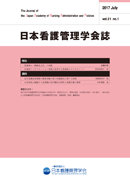Volume 3, Issue 2
Displaying 1-6 of 6 articles from this issue
- |<
- <
- 1
- >
- >|
-
1999Volume 3Issue 2 Pages 6-13
Published: 1999
Released on J-STAGE: December 28, 2018
Download PDF (1691K) -
1999Volume 3Issue 2 Pages 14-20
Published: 1999
Released on J-STAGE: December 28, 2018
Download PDF (1505K) -
1999Volume 3Issue 2 Pages 21-27
Published: 1999
Released on J-STAGE: December 28, 2018
Download PDF (1581K)
-
1999Volume 3Issue 2 Pages 28-38
Published: 1999
Released on J-STAGE: December 28, 2018
Download PDF (2505K) -
1999Volume 3Issue 2 Pages 39-51
Published: 1999
Released on J-STAGE: December 28, 2018
Download PDF (3012K) -
1999Volume 3Issue 2 Pages 52-59
Published: 1999
Released on J-STAGE: December 28, 2018
Download PDF (1894K)
- |<
- <
- 1
- >
- >|
